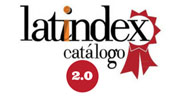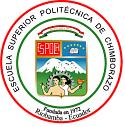Experimentation in Software Engineering: Pair Programming Case Study
DOI:
https://doi.org/10.47187/perspectivas.7.1.238Keywords:
Pair programming, Programming, Code qualityAbstract
Due to the benefits of pair programming in software development, such as increased production of quality code and knowledge transfer within a development team, this practice has captured the interest of educators in Software Engineering as an effective strategy for developing key skills in students. To evaluate its effectiveness as a teaching method, a study was conducted with Software Engineering students, applying programming-related activities. When comparing the results in terms of grades and code quality, both individually and in pairs, and after applying statistical tests, it was concluded that pair programming improves students' overall performance. The results showed that grades and code quality in pairs were higher on average, confirming that this practice is an effective and beneficial teaching method.
References
McConnel, S. Code Complete. A practical handbook of software construction. Microsoft Press, 2004.
Williams, L. y Kessler, R. Pair Programming Illuminated. Addison-Wesley, 2003.
Beck, K. y Andres, C. Extreme programming explained. Second Edition. Addison-Wesley, 2004.
Wood, K., Parsons, D., Gasson, J., y Haden, P. “It's never too early: pair programming in CS1”. In Proceedings of the Fifteenth Australasian Computing Education Conference - Volume 136 (ACE '13). Australian Computer Society, Inc., AUS, 2013, pp. 13–21. Biol. 147, 195197 (1981). doi: 10.1016/0022-2836(81)90087-5
Lai, H. y Xin, W. "Experimental research of the pair programming in java programming course," Proceeding of the International Conference on e-Education, Entertainment and e-Management, Bali, Indonesia, 2011, pp. 257-260.
Piattini, M. Métodos de investigación en ingeniería del software. Ra-Ma, 2014.
Published
How to Cite
Issue
Section
License
Copyright (c) 2025 José Julian Ventura Uscanga, Patricia Martínez Moreno, Luis Antonio Morales Velásquez, Antonio Vergara Camacho

This work is licensed under a Creative Commons Attribution 4.0 International License.
Copyright
The authors of the manuscripts will retain their copyright on their articles published in Pespectivas Journal. These rights allow the authors to present their manuscripts in public, prepare derivative works, reproduce them physically by printing and distribute them on their social or research networks. These rights will remain unchanged as long as the authors respect the publication and free access policy of Perspectivas Journal.
Publication Rights
Perspectivas Journal reserves all first publication rights on each of the articles that the authors have sent to its review and publication process. It implies that authors will only exercise their copyright if they state the source and origin of the publication correctly, mainly when they distribute, share, present, or use their articles' total or partial content.














